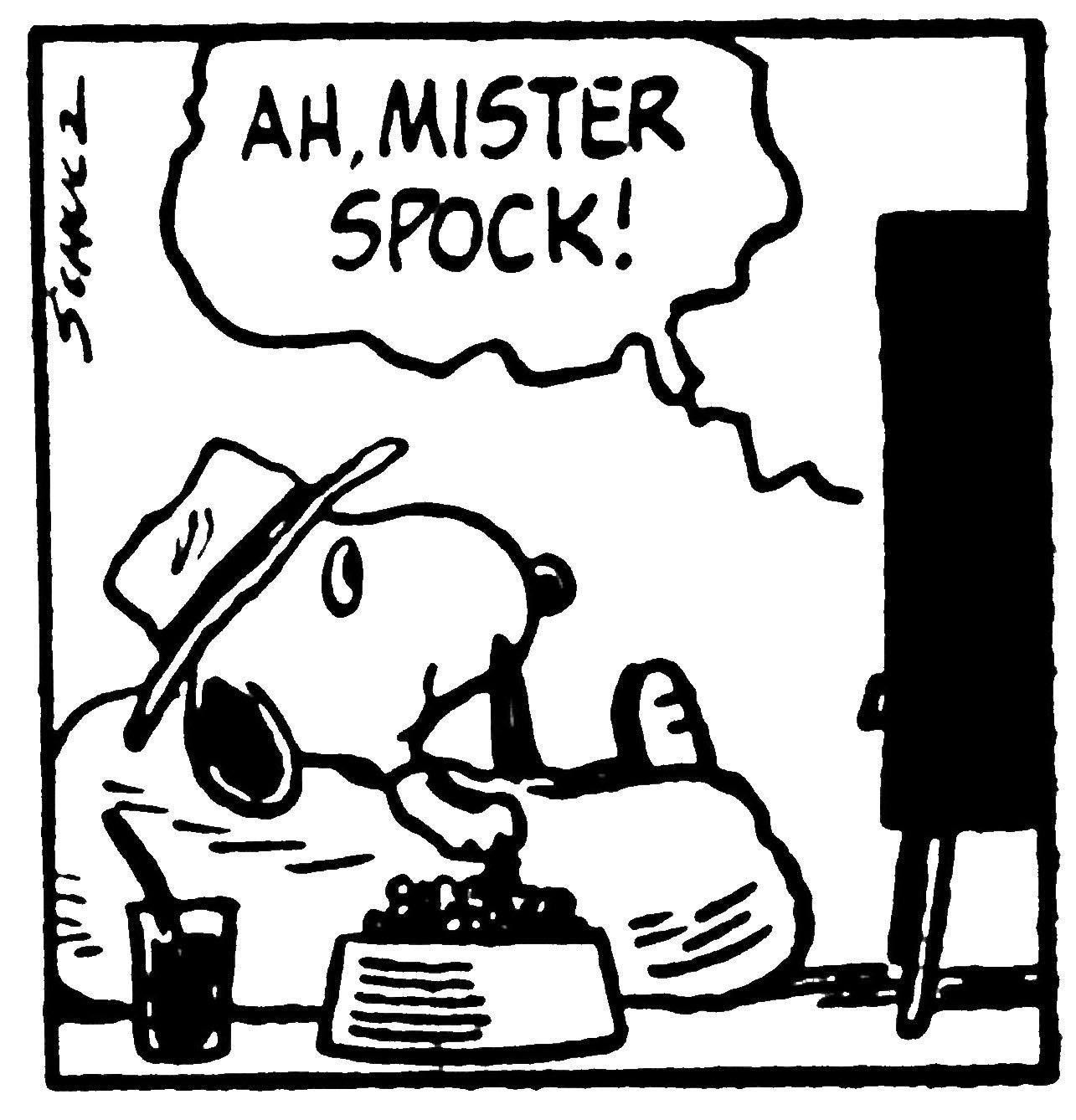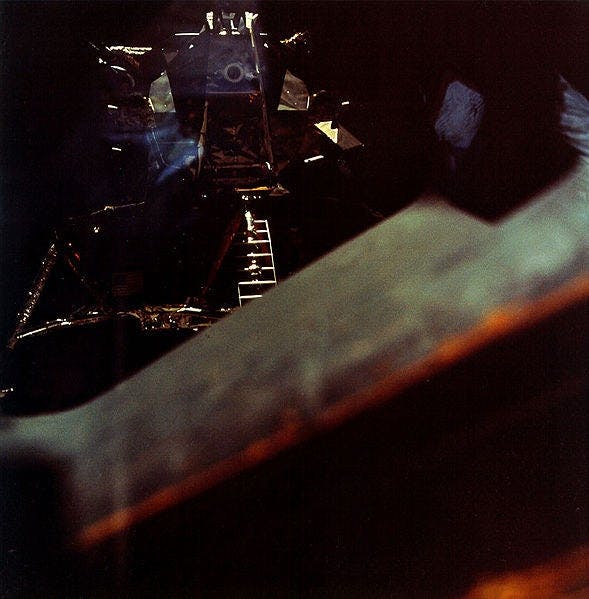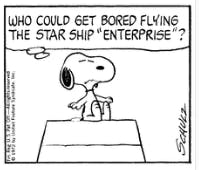Published May 14, 2021
8 Links Between Star Trek and the Peanuts
It’s not just that Charlie Brown is as bald as Jean-Luc!

StarTrek.com
Star Trek has been a cultural force since its introduction in the 1960s. Charles Schulz’s Peanuts, the comic strip featuring the downbeat ‘every-kid’ Charlie Brown and his imagination-filled dog Snoopy, entered our consciousness in the decade before that. With all that shared time in the zeitgeist, it should come as no surprise that they have some things in common and intersect in interesting ways.
8. Both had film series at Paramount in the late '70s
In 1977, Paramount took over releasing the Peanuts theatrical feature films, starting with Race For Your Life, Charlie Brown. By that time, work had commenced on Star Trek: The Motion Picture. While Paramount’s second Star Trek film, The Wrath of Khan, grossed $97 million at the box office, the second Peanuts film, Bon Voyage, Charlie Brown (and Don’t Come Back!!) raked in a mere $2 million. Perhaps it’s unsurprising that the Star Trek series continued, while Charlie Brown didn’t have quite the triumphant return.
7. Dale Hale
Among the folks who helped revive Star Trek as an animated series in 1973 was storyboard artist Dale Hale, who at that point had years of experience in animation. He’d gotten rolling as an artist working as an assistant in the studio of Peanuts creator Charles Schulz in the late 1950s and early 1960s. While Schulz wrote and drew the Peanuts newspaper strip by himself, Dale handled an outside-the-strip items, most notably creating original Peanuts stories for comic books. Even after Hale had left the studio, Schulz called on him to illustrated the original book adaptation of the 1965 TV special A Charlie Brown Christmas.
6. Whoopi is a Peanuts fan

StarTrek.com
Whoopi Goldberg, who portrayed the bartender Guinan on Star Trek: The Next Generation, is a major fan of Charlie Brown and friends. Not only did she host the Peanuts 50th anniversary special Here’s to You, Charlie Brown in 2000, she also has a much more personal connection: a tattoo of the little bird Woodstock has been on her chest since 1977. As she noted in her introductory comments to the book The Complete Peanuts: 1959 to 1960, “When I see the tattoo I think of him just talking to me, as he would to Snoopy. It’s kind of dopey, but I love it.”
5. Snoopy’s brother is a secret Star Trek fan

Charles Schulz
Spike, Snoopy’s brother who lives in the California desert, was shown watching Star Trek in two strips in July 1978... but only if you read the strips in their original newspaper appearance, not in the reprint books. The reason behind the change is a bit dark. When Schulz originally drew these strips, the dialog shown emanating from the TV set in each said “Ah, Colonel Hogan;” clearly Spike was watching the 1960s prisoners-of-war sitcom Hogan’s Heroes. After Schulz submitted the strips to his syndicate but before they saw print, Bob Crane, the actor who played Hogan, was murdered. Having a humorous reference to his character at that moment would’ve been in bad taste, and so the dialog was adjusted to “Ah, Mister Spock!” The reprint books have all used copies of the strip that had been made before the adjustment occurred.
4. Woodspock

William Johnson
For years, the California city of Santa Rosa celebrated being the home to Schulz’s studio via summer events in which dozens of artists would all be given the same statue of a Peanuts character, to adapt in their own artistic way. In 2006, employees of the analytical instrument company Agilent turned that year’s Woodstock statue into “Woodspock,” placing him aboard the U.S.S. Snoopy. This statue proved popular enough that it was mass-produced in a version that would fit on your desk, and Woodspock himself later reappeared as a limited edition bobblehead.
3. Both have been used to promote NASA
The US’s National Air and Space Administration (NASA) has repeatedly taken the goodwill towards space exploration that Star Trek generated and brought it to their own efforts, most notably by hiring Nichelle Nichols (TOS’s Uhura) to help recruit astronauts and bring some of the Enterprise’s diversity to the space program. The NASA/Peanuts partnership is most visible in the form of Snoopy in Space, the animated series that NASA uses to show STEM concepts as well as the space station life for the average beagle. If you think that Snoopy on a space station is unlikely, realize that every manned NASA spaceflight since 1968 has a packet of little silver Snoopy pins. These space-flown items are used as awards in recognition of those who have helped with the safety and success of space missions.
2. Both have had NASA spacecraft named for them

NASA
The first space shuttle in NASA’s fleet, unveiled in 1976, was named Enterprise — an appellation given to it at the request of President Gerald Ford after Star Trek fans had campaigned for it. This was seven years after the flight of Apollo 10, which was an everything-but-the-landing test run for the first manned trip to the moon. Apollo 10 had a pair of modules that separated: the Lunar Module, named “Snoopy”, separated from the Command and Service Module, named “Charlie Brown.” The mission was a success. Snoopy was, as planned, abandoned in space, while Charlie Brown brought the astronauts safely home to earth.
1. Snoopy has flown the Enterprise

Charles Schulz
Snoopy, in his imagination, has often become the World War I Flying Ace, flying a Sopwith Camel fighter that just happens to look a lot like a doghouse. On just one occasion, though, he instead boldly went where no beagle had gone before. On February 7, 1972, when Linus voices concern that Snoopy must be bored just sitting on his doghouse, Snoopy responds by taking a pose like he’s sitting in the captain’s chair and thinks “Who could get bored flying the star ship Enterprise?” What makes this surprising is its timing. Less than two weeks before, the unexpectedly huge turnout for the very first Star Trek convention ever had demonstrated that Star Trek was not some forgotten show years after its cancellation but an ongoing culture phenomenon. Given the lead time involved in comics production, Schulz would have drawn the strip weeks before the convention. In that way, he was one step ahead.
Nat Gertler (he/him) is the author of The Peanuts Collection, The Snoopy Treasures and Be More Snoopy. He blogs about Peanuts at http://blog.AAUGH.com and can be found on twitter at @natgertler.

